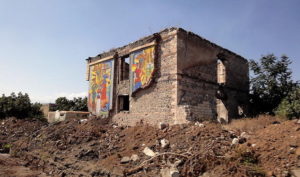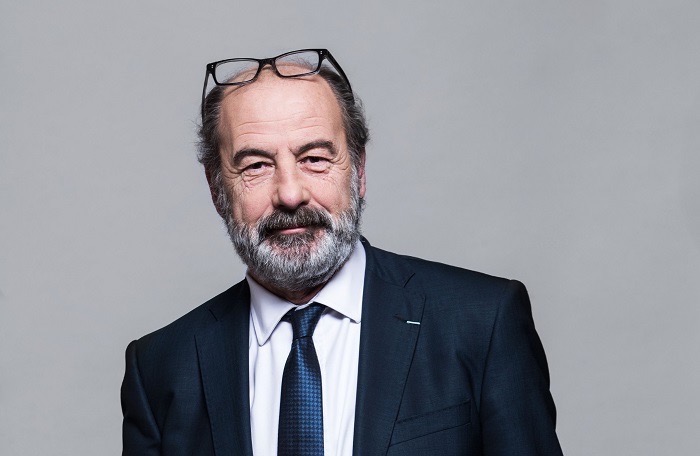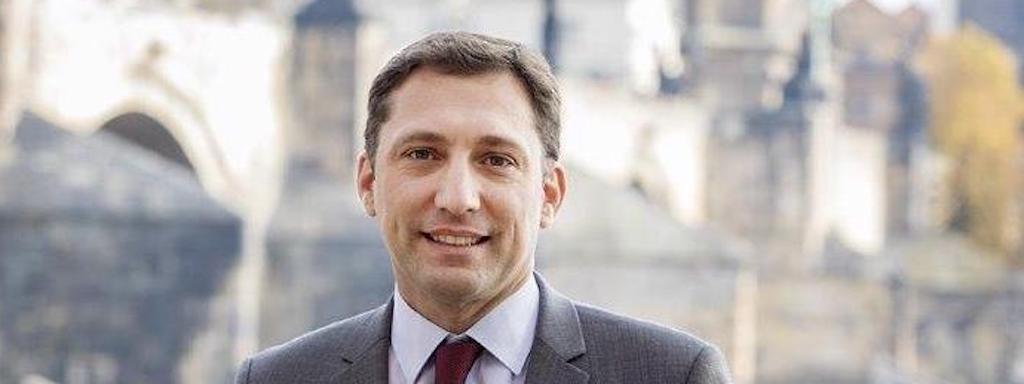
After nearly 44 days of war in Karabakh which started on September 27, 2020, the tripartite agreement under Russian aegis signed on November 10, 2020 led to the definitive cessation of hostilities between Azerbaijan and Armenia. But especially at the end of the Armenian occupation of this territory taken by the pro-Armenian army and the support of Yerevan since 1991. Since then, peace has been built despite difficulties.
If the reconstruction is in progress in order to make it possible, in particular to secure the territory, for Azeri refugees to return to their land, for the infrastructures to be developed, many questions remain unanswered and unresolved. Whether it is the question of the mines, which still cover all the ground of the liberated area of Azerbaijan, that of the restoration of the heritage destroyed or preserved, the extremely difficult economic situation for the Azeri refugees, a major problem persists which prevents any lasting, solid reconstruction, and healthy peace: the continuation of illegal Armenian activities in Karabakh that quickly risk to deteriorate the atmosphere of coexistence and reconciliation.
It has been more than a year since the territory was taken over by Azerbaijan and there are many difficulties on the ground before allowing people to return safely to their homes. But the policy pursued by Armenia, behind a number of non-governmental organizations, supported by the Armenian diaspora throughout the world, does not help and is far removed from the original and human purpose for which the money was raised. If it is about local humanitarians associations who come to the aid of the Armenian population who have remained in a part of Karabakh, then why not? But for the government to divert money collected for military purposes in the name of martial law is not only unacceptable, but above all illegal.

So what are we talking about exactly? A collective of NGOs, which operate from various countries around the world, have been responsible since the peace agreement for raising funds, which can be associated with charitable and humanitarian works. In particular, the Armenian association based in the United States, Hayastan Ali Armenian Fund, which is responsible for coordinating the fundraising operations. We are talking about nearly 110 million dollars raised during the war with Azerbaijan for a year and a half, and for which, even the Armenian Prime Minister and Finance Minister recently acknowledged that more than half, or 52 million dollars, had been allocated to the general budget of the country, according to martial law (“war effort”), without anyone analyzing the source of the money. This, of course, leading to serious risks of corruption, money laundering, and even the financing of terrorism. Pashinian found a curious way to justify himself by declaring on April 22, 2021 that “the 52 million used in the context of martial law, represented less than 50% of the total collected by the fund”[1].
With 16 branches in different countries around the world, it has been singled out several times for acts of corruption for several years. Criminal legal proceedings are underway in Armenia against Ara Vardanyan, the former executive director of the Fund, for embezzlement, but also against hundreds of intermediaries or collaborators[2]. A first Armenian official, Avetik Harutunyunan, is also indicted in the same case[3]. An article from the News.am site explained on April 27, 2021, that: “The other defendant in the case is Avetik Harutyunyan, who is charged in connection with the case that, as of March 22, 2004, he was director of a company managing 100% of the Hayastan All-Armenian Fund created by Armenia, which despite being a civil servant, committed official fraud and helped Ara Vardanyan to embezzle particularly large amounts. Even worse, at the end of December 2020, former Armenian President Armen Sarkissian was still waiting for an accurate report on how the $110 million collected had been spent[4]. Since then, still nothing.
However, it is still this Organization that collected the 2020 post-conflict money, under the campaign “We are our borders, all for Artsakh!”. On the campaign website[5], it is even specified that all donations would go to humanitarian projects. The problem is that these direct transfers to the state budget already contravene the Fund’s statutes which are signed by the organization’s executive committee, that includes the country’s most prominent political figures, including former President Sarkissian and Prime Minister Pashinyan. We seem to be facing a generalized system of corruption without anyone seeming determined to go back.
We find that partners of this Fund are present in more than 16 countries: in the United States, in Canada, in Argentina, in the Netherlands, in France, in Greece, but also in Brazil, in Belgium, in Germany, Australia, Austria, United Kingdom, Portugal, Sweden and so many other countries. Must we be reminded that the Armenian diaspora is one of the largest in the world, in proportion to the number of Armenians on the planet[6]? There are no illicit transfers of capital without assistance from the banks, which allows them pass without asking not only their source but questioning their breakdown. Banks like Deutsche Bank, HSBC, Chase Bank, therefore seem directly complicit in the opaque circulation of more than 110 million dollars. Who paid? Where does the money come from? What actions is it the result of? Why does money from foreign NGOs arrive in the account of the Armenian state to finance the projects against the other country? And by what right the money of the humanitarian NGO are used for military needs? On the other side of the spectrum, Armenian donors were also misled about what would become of their contributions.
These actions contravene not only the agreement signed between Russian, Azerbaijand and Armenia, but also international legislation on financial transparency. Indeed, the tripartite agreement signed on November 10, 2020 commits the parties to one major thing: the prohibition of military activities of any kind on the concerned territory. However, the money concerned left in the budget of the Armenian State clearly left in the name of martial law (since specified by authorities) towards the support of the Armenian forces which fought against Azerbaijan on Azeri territory. Yet Article 1 is clear: “A complete ceasefire and an end to all military operations in the Nagorno-Karabakh conflict zone will come into effect on November 10, 2020 from 00:00 Moscow time. The Republic of Azerbaijan and the Republic of Armenia will retain their current positions. Ditto for Article 4: “A peacekeeping center for monitoring the ceasefire is set up to increase the effectiveness of monitoring compliance with agreements by the parties to the conflict. »
On the international law side, it also contravenes the International Conventions for the Suppression of the Financing of Terrorism, the United Nations Convention against Corruption, as well as the UN Convention against Transnational Organized Crime. But also resolutions 1373, 2178, 2195, and 2347 of the United Nations Security Council[7]. All of these assets should be frozen in order to prosecute those responsible. There must have been corruption for the humanitarian funds to switch to the Armenian military.
Also, international and financial law is supposed to be very strict on the control and circulation of money, its origin, and its destination which could concern both drug trafficking and terrorism. A humanitarian organization is a humanitarian organization and must not only justify the origin of its funds but also ensure that they are used properly and respect international law. Armenia does not seem anxious and in a hurry to do so and to return this capital.

How, in a context where the Armenian State diverts humanitarian money for military purposes, can Azerbaijan build secure roads and promote the return of its refugees as provided for, in particular in article 6, of the agreement of November 10, 2020 with the Armenian military lead still hanging over its head? Isn’t peace therefore called into question? And this is while things are pretty clear: “Internally displaced persons and refugees will return to the territory of Nagorno-Karabakh and the adjacent regions under the supervision of the Office of the United Nations High Commissioner for Refugees. And while, as stated in Article 4, “A peacekeeping center for monitoring the ceasefire shall be set up in order to increase the effectiveness of the monitoring of compliance with the agreements by the parties to the conflict. What could this money have been used for?
It is therefore urgent that the United Nations, the European Union, the Council of Europe and the international financial monitoring institutions take up the issue as quickly as possible in order to ensure complete transparency on the origin of its funds, their allocation and bring Hayastan All-Armenian Fund activities into line with international law. Because if a clause of an international convention is not respected, it is the whole of it that is in danger. And the peace process as the fragile peace still to be built in an unstable region at the same time. The Caucasus must avert any risk of renewed war, terrorism or drug trafficking. And this opaque money could well be one of the cogs of a new war machine to come if the bubble will not be pierced as soon as possible.
[9] https://www.armencom.be/fr/actualite/presse/1649-head-of-special-investigative-service-says-inquiry-will-prove-whether-hayastan-all-armenian-fund-director-repaid-embezzled-millions
[10] https://news.am/eng/news/641091.html
[11] As explains the armenien informations website Asbarez here: https://asbarez.com/president-still-awaiting-government-report-on-100-million-hayastan-fund-donation/
[12] https://www.himnadram.org/en/home
[13] There are 12 million Armenians in the world including 9 million outside Armenia
[14] https://www.unodc.org/pdf/crime/terrorism/res_1373_french.pdf

Sébastien BOUSSOIS
Doctor in political science, Middle East researcher Euro-Arab relations/ terrorism and radicalisation, teacher in international relations, scientific collaborator of CECID (Université Libre de Bruxelles), OMAN (UQAM Montréal) and SAVE BELGIUM (Society Against Violent Extremism)

















